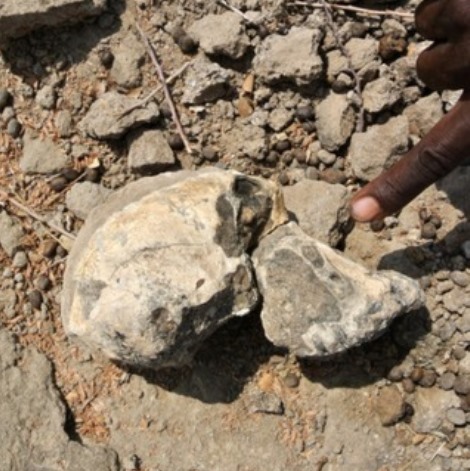At the Woranso-Mille paleontological site in northern Ethiopia, researchers have discovered a 3.8 million-year-old cranium (skull) belonging to a primitive hominin known as Australopithecus anamensis. Initially unearthed in 2016, but not reported until dating and other analyses were completed in 2019, the well-preserved fossil is the first skull of this particular species to be found. Paleoanthropologists expect that this discovery will reshape the ancient timeline of human evolutionary history because it reveals the previously unknown facial features of A. anamensis, which now can be compared to the facial morphologies of other ancient hominins. The fossil evidence also opens up the possibility of the coexistence of two early hominins—A. anamensis and A. afarensis—in the same area of Ethiopia. Prior to this cranium discovery, these two species were assumed to have emerged consecutively along a more linear chronology. See also: Anthropology; Australopith; Dating methods; Earliest hominins; Fossil; Fossil humans; Paleontology; Physical anthropology

Australopithecus anamensis is the oldest known member of the Australopithecus lineage. Members of the Australopithecus genus—that is, australopiths—comprise an adaptively diverse group of extinct hominin species that inhabited Africa between approximately 4.2 million and 1.2 million years ago. Australopithecus anamensis preceded the Homo genus, which includes H. sapiens, the modern human species. Furthermore, investigators also believe that A. anamensis preceded other known australopith species, including A. afarensis, which is the species assigned to the notable Lucy skeleton. However, because of significant morphological differences in the skull of the newly discovered 3.8 million-year-old A. anamensis specimen and an older skull fragment that was provisionally assigned to A. afarensis, which is dated to 3.9 million years ago, there is a strong likelihood that the two species coexisted simultaneously for at least 100,000 years. See also: Africa
In addition, the facial features of the A. anamensis cranium indicate similarities to those of later (descendent) australopith species, as well as to those of older hominins, such as Ardipithecus and Sahelanthropus. Therefore, the early phylogeny or evolutionary history of hominins is likely to be much more intertwined than initially thought by paleoanthropologists. It is expected that future fossil discoveries will provide additional evidence for the existence of multiple hominin species during the time period between 3 million and 4 million years ago. See also: Evolution; Phylogeny





